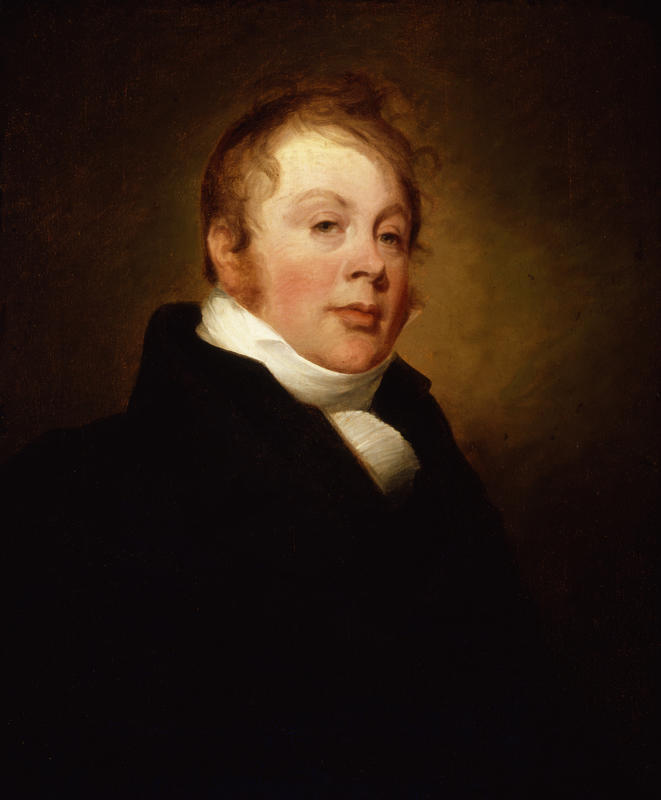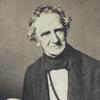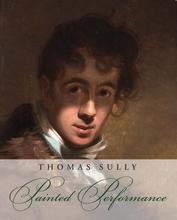More about Portrait of William Warren
- All
- Info
- Shop

Contributor
You may not believe it, but behind Thomas Sully's rather humble and modest portrait of William Warren is a rather dynamic love story.
Sully’s Portrait of William Warren is not only stylistically Romantic, but literally as well. William Warren was born in 1767 to a cabinet maker in Bath, England. While William was on track to become a carpenter like his father, he really had aspirations of becoming an actor. Luckily he was in the right city, as Bath had a flourishing theatrical community at the time. Enter one Ann Burton Merry, daughter of a theater manager. The two met in Bath and went through their formative years in similar circles in the small city, both formally debuting when they turned seventeen. It's hard not to believe that William had a considerable crush on Ann as Ann was rather beautiful, a fact made evident in how the young actress was immediately swept up by the 18th century entertainment industry, and was sent to perform in London a year after she officially started acting. William on the other hand, being far from gorgeous would not see the same opportunities presented to him.
They would be granted a second chance however, nearly twenty years later and halfway around the world. At the turn of the century they would reunite in Philadelphia. William having established himself as a comedian and actor complete with his own troupe of performers. Ann, now the manager of her father’s theatrical company and widowed a week after her second marriage.
The two reunited in dramatic and steamy romance that immediately resulted in Ann’s pregnancy, and the two lived together in elegant decadence. However despite the fact that the two seemed meant to be together, it was not so. As their marriage could not survive the horrors of having lost not one but two children.
Soon after William was married again, and commissioned the creation of two portraits, through an artist who would go on to paint Andrew Jackson. One containing his new wife and daughter, the other however, just him. Forever framing William as the face of an unknown love story.
Sources
- Wilson, J. G.; Fiske, J., eds. (1889). "Warren, William (actor)" . Appletons' Cyclopædia of American Biography. New York: D. Appleton.
- Wiki Contributors “Ann Brunton Merry” Wikipidia https://en.wikipedia.org/wiki/Ann_Brunton_Merry 06/15/19
- Philip H. Highfill, Kalman A. Burnim, Edward A. Langhans 1993 A Biographical Dictionary of Actors, Actresses, Musicians, Dancers, Managers, and other Stage Professionals Carbondale: Southern Illinois University Press












